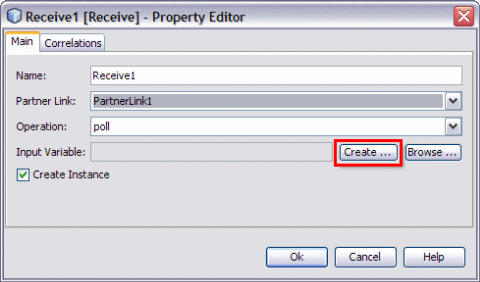Create Or Edit An Index
- How To Use Style To Create Index
- Create Or Edit An Index On Temporary Table Already
- How To Make An Index
Select Full-Text index, and then click Disable Full-Text index or Enable Full-Text index. Remove a full-text index from a table. In Object Explorer, right-click the table that has the full-text index that you want to delete. Select Delete Full-Text index. When prompted, click OK to confirm that you want to delete the full-text index. I'm working with MVC 3 / Razor for the first time and it seems odd that all the examples and VS scaffolds for create and edit views all have separate HTML views for these concepts.
Creating Indexes This section describes how to create indexes. To create an index in your own schema, at least one of the following conditions must be true:. The table or cluster to be indexed is in your own schema. You have INDEX privilege on the table to be indexed. You have CREATE ANY INDEX system privilege.
To create an index in another schema, all of the following conditions must be true:. You have CREATE ANY INDEX system privilege. The owner of the other schema has a quota for the tablespaces to contain the index or index partitions, or UNLIMITED TABLESPACE system privilege. This section contains the following topics:. Creating an Index Explicitly You can create indexes explicitly (outside of integrity constraints) using the SQL statement CREATE INDEX. The following statement creates an index named empename for the ename column of the emp table: CREATE INDEX empename ON emp(ename) TABLESPACE users STORAGE (INITIAL 20K NEXT 20k PCTINCREASE 75); Notice that several storage settings and a tablespace are explicitly specified for the index.
If you do not specify storage options (such as INITIAL and NEXT) for an index, the default storage options of the default or specified tablespace are automatically used. Creating a Unique Index Explicitly Indexes can be unique or non-unique. Unique indexes guarantee that no two rows of a table have duplicate values in the key column (or columns). Non-unique indexes do not impose this restriction on the column values. Use the CREATE UNIQUE INDEX statement to create a unique index. The following example creates a unique index: CREATE UNIQUE INDEX deptuniqueindex ON dept (dname) TABLESPACE indx; Alternatively, you can define UNIQUE integrity constraints on the desired columns.

The database enforces UNIQUE integrity constraints by automatically defining a unique index on the unique key. This is discussed in the following section. However, it is advisable that any index that exists for query performance, including unique indexes, be created explicitly. Creating an Index Associated with a Constraint Oracle Database enforces a UNIQUE key or PRIMARY KEY integrity constraint on a table by creating a unique index on the unique key or primary key. This index is automatically created by the database when the constraint is enabled. No action is required by you when you issue the CREATE TABLE or ALTER TABLE statement to create the index, but you can optionally specify a USING INDEX clause to exercise control over its creation.

This includes both when a constraint is defined and enabled, and when a defined but disabled constraint is enabled. To enable a UNIQUE or PRIMARY KEY constraint, thus creating an associated index, the owner of the table must have a quota for the tablespace intended to contain the index, or the UNLIMITED TABLESPACE system privilege. The index associated with a constraint always takes the name of the constraint, unless you optionally specify otherwise. Specifying the Index Associated with a Constraint If you require more explicit control over the indexes associated with UNIQUE and PRIMARY KEY constraints, the database lets you:.
Specify an existing index that the database is to use to enforce the constraint. Specify a CREATE INDEX statement that the database is to use to create the index and enforce the constraint These options are specified using the USING INDEX clause. The following statements present some examples. Example 1: CREATE TABLE a ( a1 INT PRIMARY KEY USING INDEX (create index ai on a (a1))); Example 2: CREATE TABLE b( b1 INT, b2 INT, CONSTRAINT bu1 UNIQUE (b1, b2) USING INDEX (create unique index bi on b(b1, b2)), CONSTRAINT bu2 UNIQUE (b2, b1) USING INDEX bi); Example 3: CREATE TABLE c(c1 INT, c2 INT); CREATE INDEX ci ON c (c1, c2); ALTER TABLE c ADD CONSTRAINT cpk PRIMARY KEY (c1) USING INDEX ci; If a single statement creates an index with one constraint and also uses that index for another constraint, the system will attempt to rearrange the clauses to create the index before reusing it. Collecting Incidental Statistics when Creating an Index Oracle Database provides you with the opportunity to collect statistics at very little resource cost during the creation or rebuilding of an index. These statistics are stored in the data dictionary for ongoing use by the optimizer in choosing a plan for the execution of SQL statements.
The following statement computes index, table, and column statistics while building index e mpename on column ename of table emp: CREATE INDEX empename ON emp(ename) COMPUTE STATISTICS. Creating a Large Index When creating an extremely large index, consider allocating a larger temporary tablespace for the index creation using the following procedure:. Create a new temporary tablespace using the CREATE TABLESPACE or CREATE TEMPORARY TABLESPACE statement.
Use the TEMPORARY TABLESPACE option of the ALTER USER statement to make this your new temporary tablespace. Create the index using the CREATE INDEX statement. Drop this tablespace using the DROP TABLESPACE statement. Then use the ALTER USER statement to reset your temporary tablespace to your original temporary tablespace.
Using this procedure can avoid the problem of expanding your usual, and usually shared, temporary tablespace to an unreasonably large size that might affect future performance. Creating a Function-Based Index Function-based indexes facilitate queries that qualify a value returned by a function or expression. The value of the function or expression is precomputed and stored in the index. In addition to the prerequisites for creating a conventional index, if the index is based on user-defined functions, then those functions must be marked DETERMINISTIC. Also, you just have the EXECUTE object privilege on any user-defined function(s) used in the function-based index if those functions are owned by another user. Additionally, to use a function-based index:.
The table must be analyzed after the index is created. The query must be guaranteed not to need any NULL values from the indexed expression, since NULL values are not stored in indexes. Note: CREATE INDEX stores the timestamp of the most recent function used in the function-based index.
This timestamp is updated when the index is validated. When performing tablespace point-in-time recovery of a function-based index, if the timestamp on the most recent function used in the index is newer than the timestamp stored in the index, then the index is marked invalid.
You must use the ANALYZE INDEX.VALIDATE STRUCTURE statement to validate this index. To illustrate a function-based index, consider the following statement that defines a function-based index ( areaindex) defined on the function area(geo): CREATE INDEX areaindex ON rivers (area(geo)); In the following SQL statement, when area(geo) is referenced in the WHERE clause, the optimizer considers using the index areaindex. SELECT id, geo, area(geo), desc FROM rivers WHERE Area(geo) 5000; Table owners should have EXECUTE privileges on the functions used in function-based indexes. Because a function-based index depends upon any function it is using, it can be invalidated when a function changes. If the function is valid, you can use an ALTER INDEX.ENABLE statement to enable a function-based index that has been disabled. The ALTER INDEX.DISABLE statement lets you disable the use of a function-based index.
Consider doing this if you are working on the body of the function. Creating a Key-Compressed Index Creating an index using key compression enables you to eliminate repeated occurrences of key column prefix values. Key compression breaks an index key into a prefix and a suffix entry. Compression is achieved by sharing the prefix entries among all the suffix entries in an index block.

How To Use Style To Create Index
This sharing can lead to huge savings in space, allowing you to store more keys for each index block while improving performance. Key compression can be useful in the following situations:. You have a non-unique index where ROWID is appended to make the key unique. If you use key compression here, the duplicate key is stored as a prefix entry on the index block without the ROWID.
Create Or Edit An Index On Temporary Table Already
The remaining rows become suffix entries consisting of only the ROWID. You have a unique multicolumn index. You enable key compression using the COMPRESS clause. The prefix length (as the number of key columns) can also be specified to identify how the key columns are broken into a prefix and suffix entry. For example, the following statement compresses duplicate occurrences of a key in the index leaf block: CREATE INDEX empename ON emp(ename) TABLESPACE users COMPRESS 1; The COMPRESS clause can also be specified during rebuild. For example, during rebuild you can disable compression as follows: ALTER INDEX empename REBUILD NOCOMPRESS. Creating an Invisible Index Beginning with Release 11 g, you can create invisible indexes.
How To Make An Index
An invisible index is an index that is ignored by the optimizer unless you explicitly set the OPTIMIZERUSEINVISIBLEINDEXES initialization parameter to TRUE at the session or system level. Making an index invisible is an alternative to making it unusable or dropping it. Using invisible indexes, you can do the following:. Test the removal of an index before dropping it. Use temporary index structures for certain operations or modules of an application without affecting the overall application.
Unlike unusable indexes, an invisible index is maintained during DML statements. To create an invisible index, use the SQL statement CREATE INDEX with the INVISIBLE clause. The following statement creates an invisible index named empename for the ename column of the emp table: CREATE INDEX empename ON emp(ename) TABLESPACE users STORAGE (INITIAL 20K NEXT 20k PCTINCREASE 75) INVISIBLE.